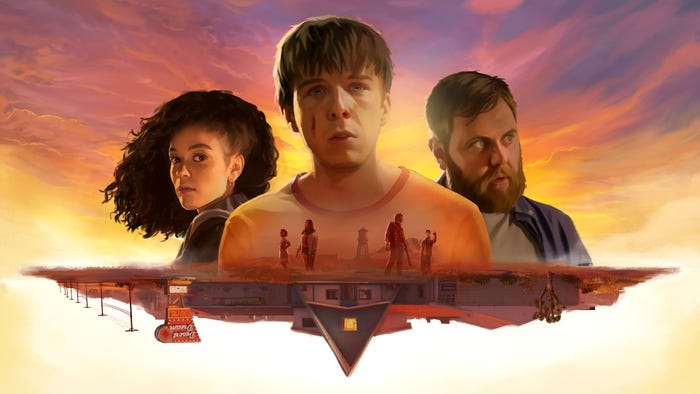From the passing of Satoru Iwata to Activision's $5.9B buyout of King, Gamasutra reflects on how some of the most momentous events of 2015 may shape our industry for years to come.

Gamasutra editor Alex Wawro continues our annual series of year-end roundups by looking back at some of the biggest events that shaped the industry in 2015.
With weeks to go until we close the book on 2015, what will you remember most about the year that was?
As the staff of Gamasutra gathered to answer that question, we looked back at the big news of the year and saw a handful of moments that shook the industry in ways too powerful to ignore.
Yesterday we ran down some of the top trends that defined the game industry in 2015, so today let’s get a bit more specific and talk about some of the big events that seem likely to shape the course of the industry for years to come.
Activision buys King in a $5.9 billion deal
The game industry runs on money, so when nearly $6 billion of it gets thrown around in a single deal it’s hard not to sit up and take notice. At the same time, the fact that an entrenched console/PC game publisher Activision Blizzard jumped headfirst into the mobile market by acquiring Candy Crush Saga-powered King was a deal so big that, honestly, it can be hard to guess at how it will meaningfully affect the industry in the near future.

But we already have a great example of how the sort of modern mobile game design tricks refined to perfection by companies like King can be meshed with a popular franchise to create a chart-topping, industry-shaping game: Hearthstone.
Activision Blizzard has reportedly seen remarkable revenue from the F2P digital card game, which has buoyed company earnings reports amid the slow, steady decline of company cash cow World of Warcraft and, as CEO Bobby Kotick told investors recently, inspired Activision-Blizzard to "think about [mobile] opportunities differently."
So when it drops a cool $6 billion on a profitable F2P mobile game firm with an established audience Activision Blizzard’s core franchises don’t typically reach, you have to figure that presages big changes for both the mobile and the console markets in the years ahead.
Nintendo strikes a deal with DeNA to go mobile
This year also marked a big mobile shift for Nintendo, but if Activision Blizzard jumped into the market headfirst it’s perhaps more appropriate to mark 2015 as the year Nintendo joined hands with DeNA and cautiously waded into the shallow end of the mobile game business.
Still, even the cautious steps it’s taken by partnering with DeNA and promising to design games and game-like apps for mobile devices is a seismic shift for a company whose leaders decried mobile games in recent years as bad for developers.

Mobile games -- and by extension, mobile game makers -- have long been perceived to be somewhat apart and at odds with their compatriots on console and PC. Nintendo is one of the oldest game companies in the business, and by shifting this year to publicly embrace the mobile market it presages a near future where the rift between platforms is mended -- a future where game designers are encouraged to experiment with new ideas on new platforms.
Ouya is sold for parts
This was the year we shut the book on Ouya and, with it, the promise of a modern-day microconsole that was open to all and (crowd)funded by the people.
And what a promise it was! Ouya was not the first or the last microconsole, but it was certainly the most hyped in recent memory. It’s multi-million dollar success on Kickstarter back in 2012 almost certainly inspired companies like MadCatz, Razer and Nvidia to pour resources into making their own microconsoles, which makes it all the more remarkable that Razer came full-circle and bought out Ouya’s brand and talent in an all-cash deal earlier this year.

For all its promise, Ouya was dogged by problems from the day it launched -- from bad hardware design to a lukewarm adoption rate and a “Free the Games” developer fund that seemed to be backed by the best of intentions but wound up stiffing many developers out of payments they’d been promised.
The fact that Razer seems to have stepped in and proposed to make good on those debts in a cash-now-for-games-later deal suggests that maybe something better will rise from the ashes of Ouya’s demise.
The former Ouya developers who are now likely part of Razer’s own microconsole efforts don’t have the warm fuzzy feeling of working on a much-hyped open platform, but maybe that’s okay -- as a number of experts suggested to Gamasutra earlier this year, maybe the dream of Ouya was never really that feasible in the first place. Now that the Ouya is dead in all but name, maybe the talent that built it will have the opportunity to make something better in the years ahead.
The Feds crack down on YouTubers
The rise of the YouTuber is neither a particularly new nor singular event -- we've published a slew of articles in the past few years charting how the broadcasting platform continues to shape the game industry -- but in 2015 the Federal Trade Commission acknowledged the influence of YouTubers through two important events.
By laying out strict, specific guidelines for how broadcasters on YouTube, Twitch and other services should disclose sponsored videos, the FTC cemented YouTubers' role as influential media personalities and marketing platforms. However, many online broadcasters continue to disregard the FTC's disclosure guidelines.
This was also the year that major YouTuber network Machinima settled with the FTC over charges that Machinima YouTubers had deceived viewers by producing videos endorsing the Xbox One, without disclosing that they were being paid for the videos as part of a Microsoft marketing initiative. Machinima is one of the bigger game-focused YouTube networks in the world, and the fact that its now effectively under probation with the same agency that helps to regulate print media and TV broadcasters is significant.
Nintendo president Satoru Iwata passes away at the age of 55
The untimely passing of Nintendo president and CEO Satoru Iwata in July shook the industry in a rare fashion, and as the year comes to a close we’re still marveling at how the man’s absence is felt by the industry to which he devoted his (working) life.
Most remember Iwata best as one of the leading faces of Nintendo as a company, for good reason: after becoming Nintendo’s fourth president in 2002 he took a very public role in shepherding the launch of the company’s DS and Wii consoles, which succeeded in attracting a broad audience to video games.
Through his Iwata Asks interview series and his appearances in Nintendo Direct videos Iwata made games and game development more approachable, and during his time leading Nintendo he did more than arguably any other executive to humanize the business of making games.

And for game developers, Iwata was something more: a compatriot. As a young man he cut his teeth making games in his free time and, later, as one of the earliest employees at HAL Laboratory. While there he worked on NES classics like Balloon Fight, EarthBound and Kirby’s Adventure; years later, when he’d worked his way up to an executive role, Iwata would still occasionally pitch in to help ship games like Pokemon Stadium and Super Smash Bros.
All of these accomplishments make Iwata’s passing this year at the age of 55 that much more impactful: he died so young, and with such a remarkable list of accomplishments, that we have to wonder what he might have done with more time. The game industry lost a lot of good people in 2015, and Satoru Iwata’s passing is one of many that will be felt in the years to come.
About the Author(s)
You May Also Like









